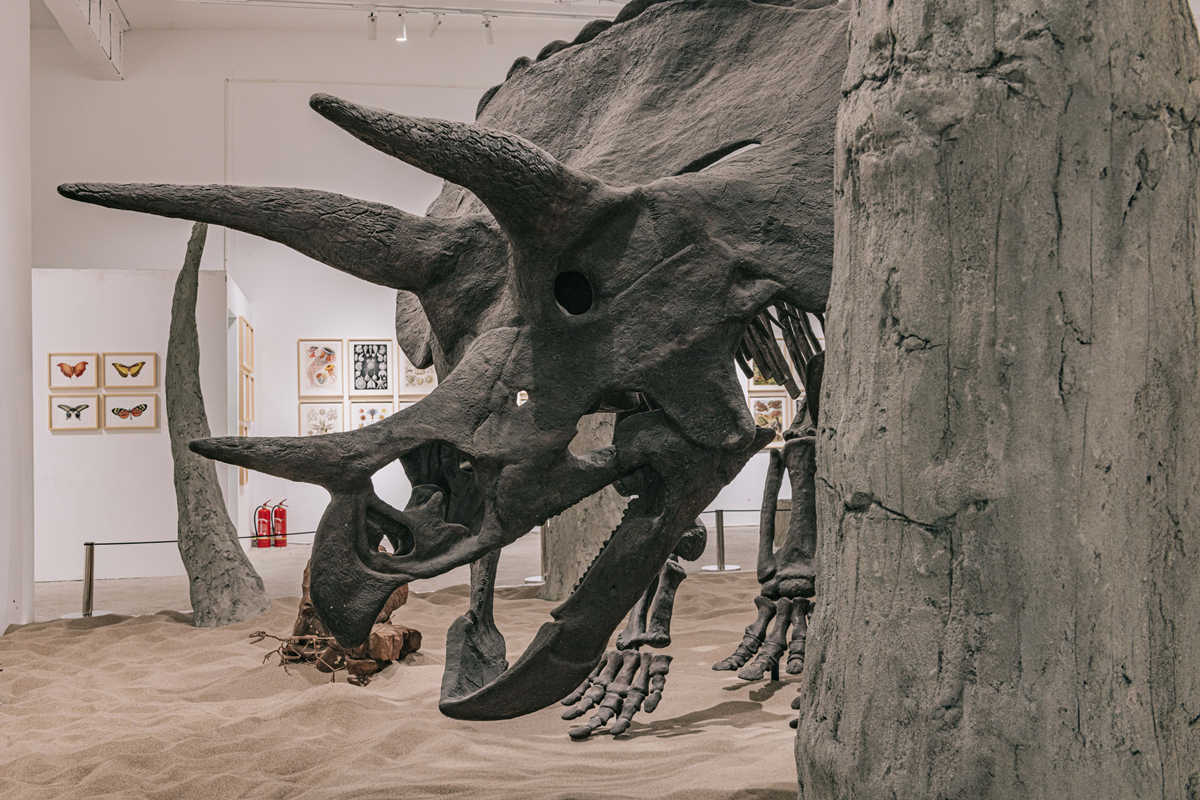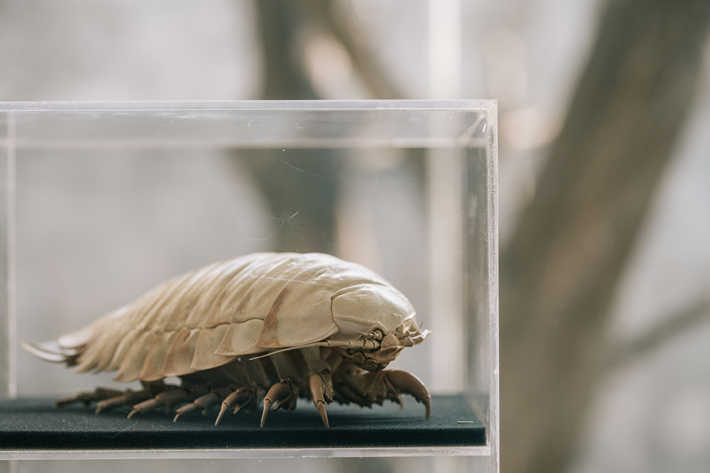Dynamic Beauty:Experiencing Natural Science Mysteries at an Art Exhibition

Natural history afforded humankind some knowledge of natural science long before the formalization of academia. Humans have always njoyed the diversity and beauty of natural life, from birds flying across the sky to grass blanketing the ground.
An art exhibition titled “Diversity: Nature History Exhibition on Arts of Nature and Science” recently held in Beijing showcased natural science and art works from ancient to modern times. It brought together works from over 15 well-known artists from China and beyond, 60-odd ancient amber and paleontological fossils, more than 2,000 pieces of blackwater photography (i.e. diving in waters more than 100 meters deep), natural paintings, shells, and other fine works of art, through which the audience can appreciate the beauty of life, understand science with artistic vision, and rethink the relationship between human and nature and that between nature and art.

More than 150 natural paintings on display show nature’s beauty across meticulous and authentic styles, a crystallization of science and arts.
Haeckel, the Cretaceous Period, and cushaw are the most representative elements of the exhibition, making them the keywords to understand the exhibits.
Ernst Haeckel (1834-1919) was a German naturalist who introduced Darwin’s theory of evolution to Germany and improved it while putting forward concepts such as “ecology” and “stem cells.” He was also a talented artist who produced many beautiful natural paintings with superb skills in an era when photography was not yet precise enough to support his study. The unique order and symmetrical beauty of nature, both macroscopic and microscopic, can be found in his artistic works that were meant to support his evolutionary views and reconstruct the existing history of species development.
Natural paintings have become quite valuable both as works of art and documentation of science. Hall 1 offered a total of 150 works of several well-known foreign naturalist painters such as Haeckel, American naturalist John James Audubon (1785-1851), and Matilda Smith (1854-1926), chief painter of the British Royal Botanic Gardens, as well as pieces featuring exotic flowers and herbs like 18th and 19th-century ricepaperplant pith and bodhi leaf paintings from China. Subjects include plants, marine life, birds, insects, and others. Viewers could enjoy the beauty of the biological world while learning about how people’s cognition of nature evolved and changed over time.

A specimen of Bathynomus giganteus,an abyssal fauna.
The Cretaceous Period began 145.0 million years ago and ended 66 million years ago, during which time dinosaurs peaked as the dominant terrestrial vertebrates. In the center of Hall 1 was a “zoo” of ancient animals stretching nearly 500 square meters, anchored by three full-scale restored dinosaur skeletons. The largest and most impressive was a triceratops skeleton that extended eight meters, shining light on the Cretaceous Period.
On the third floor of the exhibition hall, a virtual installation, created with the help of computer rendering, featured large cushaws and watermelons. It is the first international endeavor of Cyril Lancelin, a contemporary French installation artist. When walking into it, visitors could feel the beauty of interaction between the physical and the digital and compare it to exchanges between nature and technology.

Mushrooms’ Runaway, a 2016 artwork by Yin Yue, made of wool, cloth, cotton thread, and cotton. Mushrooms were personified comment on “labels” in contemporary times.
The exhibition also featured more than 50 ancient pieces of amber that testify to dynamic behaviors of ancient animals such as ant fights. More than 600 photographs and 20 deep-sea videos on display captured the world’s most massive biological migration of planktons with detailed and vivid vertical actions. A total of 25 different forms of snowflakes were shown slowly falling through 3D-modeling and animation-driven micro-photography. Such cutting-edge works highlighted the richness of natural history and natural aesthetics far more comprehensively and deeply, greatly enriching the audience’s viewing experience.